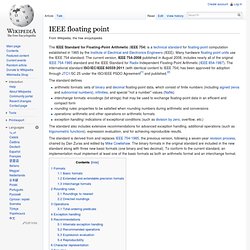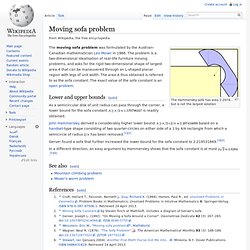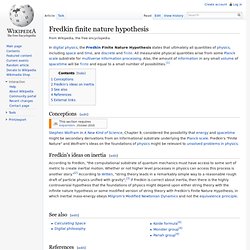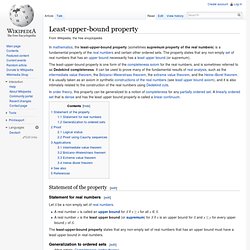

IEEE floating point. The IEEE Standard for Floating-Point Arithmetic (IEEE 754) is a technical standard for floating-point computation established in 1985 by the Institute of Electrical and Electronics Engineers (IEEE).

Many hardware floating point units use the IEEE 754 standard. The current version, IEEE 754-2008 published in August 2008, includes nearly all of the original IEEE 754-1985 standard and the IEEE Standard for Radix-Independent Floating-Point Arithmetic (IEEE 854-1987). The international standard ISO/IEC/IEEE 60559:2011 (with identical content to IEEE 754) has been approved for adoption through JTC1/SC 25 under the ISO/IEEE PSDO Agreement[1] and published.[2] The standard defines The standard also includes extensive recommendations for advanced exception handling, additional operations (such as trigonometric functions), expression evaluation, and for achieving reproducible results. Formats[edit] An IEEE 754 format is a "set of representations of numerical values and symbols". A format comprises: Moving sofa problem. The Hammersley sofa has area 2.2074... but is not the largest solution The moving sofa problem was formulated by the Austrian-Canadian mathematician Leo Moser in 1966.

The problem is a two-dimensional idealisation of real-life furniture moving problems, and asks for the rigid two-dimensional shape of largest area A that can be maneuvered through an L-shaped planar region with legs of unit width. The area A thus obtained is referred to as the sofa constant. The exact value of the sofa constant is an open problem. Lower and upper bounds[edit] As a semicircular disk of unit radius can pass through the corner, a lower bound for the sofa constant is readily obtained.
John Hammersley derived a considerably higher lower bound based on a handset-type shape consisting of two quarter-circles on either side of a 1 by 4/π rectangle from which a semicircle of radius has been removed.[1][2] Gerver found a sofa that further increased the lower bound for the sofa constant to 2.219531669.[3][4] Fredkin finite nature hypothesis. In digital physics, the Fredkin Finite Nature Hypothesis states that ultimately all quantities of physics, including space and time, are discrete and finite.

All measurable physical quantities arise from some Planck scale substrate for multiverse information processing. Also, the amount of information in any small volume of spacetime will be finite and equal to a small number of possibilities.[1] Conceptions[edit] Stephen Wolfram in A New Kind of Science, Chapter 9, considered the possibility that energy and spacetime might be secondary derivations from an informational substrate underlying the Planck scale. Fredkin's "Finite Nature" and Wolfram's ideas on the foundations of physics might be relevant to unsolved problems in physics. Fredkin's ideas on inertia[edit] According to Fredkin, "the computational substrate of quantum mechanics must have access to some sort of metric to create inertial motion.
Combinatorics and more. Least-upper-bound property. The least-upper-bound property is one form of the completeness axiom for the real numbers, and is sometimes referred to as Dedekind completeness.

It can be used to prove many of the fundamental results of real analysis, such as the intermediate value theorem, the Bolzano–Weierstrass theorem, the extreme value theorem, and the Heine–Borel theorem. It is usually taken as an axiom in synthetic constructions of the real numbers (see least upper bound axiom), and it is also intimately related to the construction of the real numbers using Dedekind cuts. Statement of the property[edit] Statement for real numbers[edit] Let S be a non-empty set of real numbers. A real number x is called an upper bound for S if x ≥ s for all s ∈ S.A real number x is the least upper bound (or supremum) for S if x is an upper bound for S and x ≤ y for every upper bound y of S. Generalization to ordered sets[edit] Proof[edit] Logical status[edit] Proof using Cauchy sequences[edit]
Neil Sloane (home page) Homeomorphism (graph theory) In graph theory, two graphs and are homeomorphic if there is a graph isomorphism from some subdivision of to some subdivision of .

If the edges of a graph are thought of as lines drawn from one vertex to another (as they are usually depicted in illustrations), then two graphs are homeomorphic to each other in the graph-theoretic sense precisely if they are homeomorphic in the sense in which the term is used in topology. In general, a subdivision of a graph G (sometimes known as an expansion[1]) is a graph resulting from the subdivision of edges in G.
For example, the edge e, with endpoints {u,v}: can be subdivided into two edges, e1 and e2, connecting to a new vertex w: The reverse operation, smoothing out or smoothing a vertex w with regards to the pair of edges (e,f) incident on w, removes both edges containing w and replaces (e,f) with a new edge that connects the other endpoints of the pair. Has a vertex (namely w) that can be smoothed away, resulting in: .